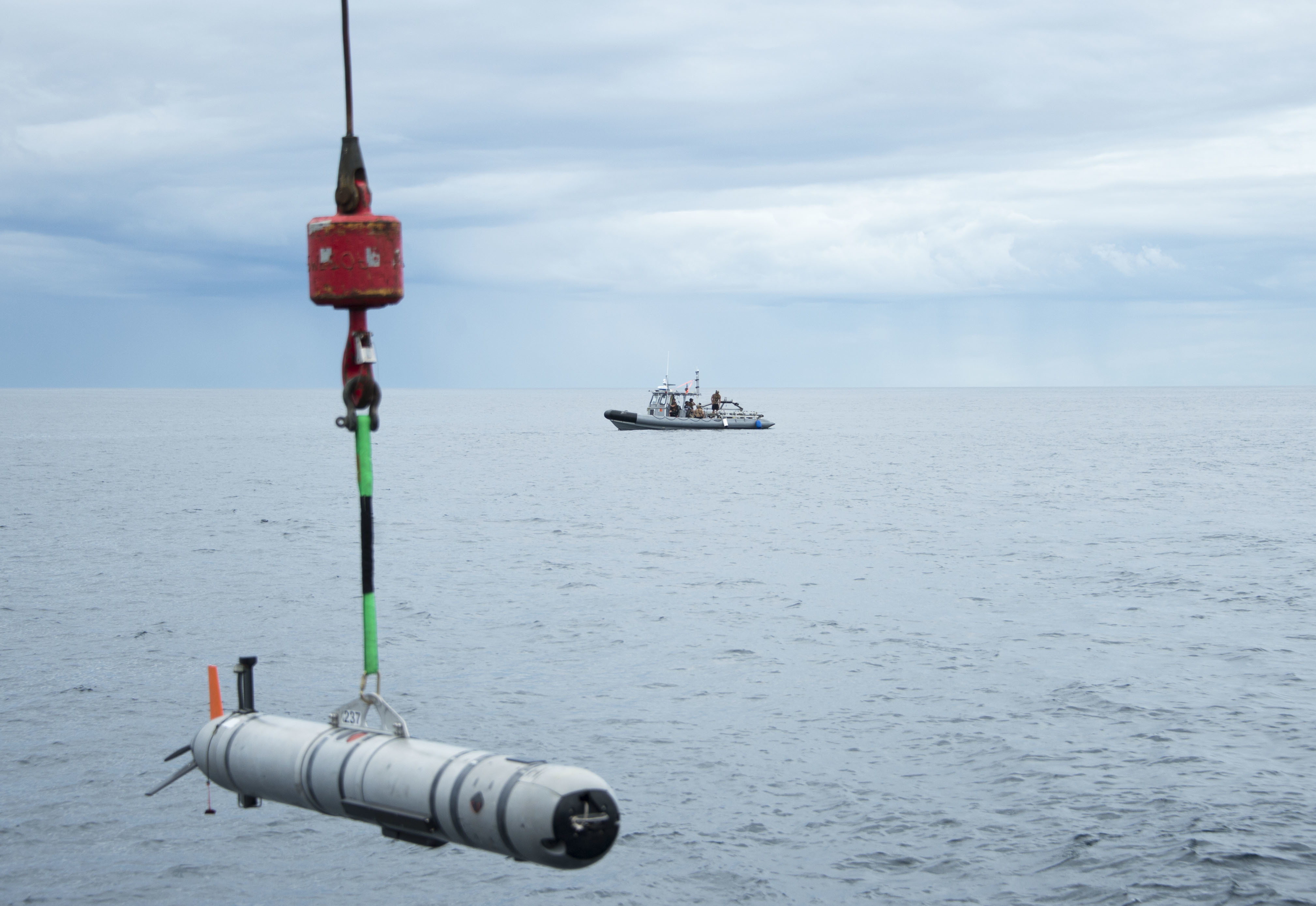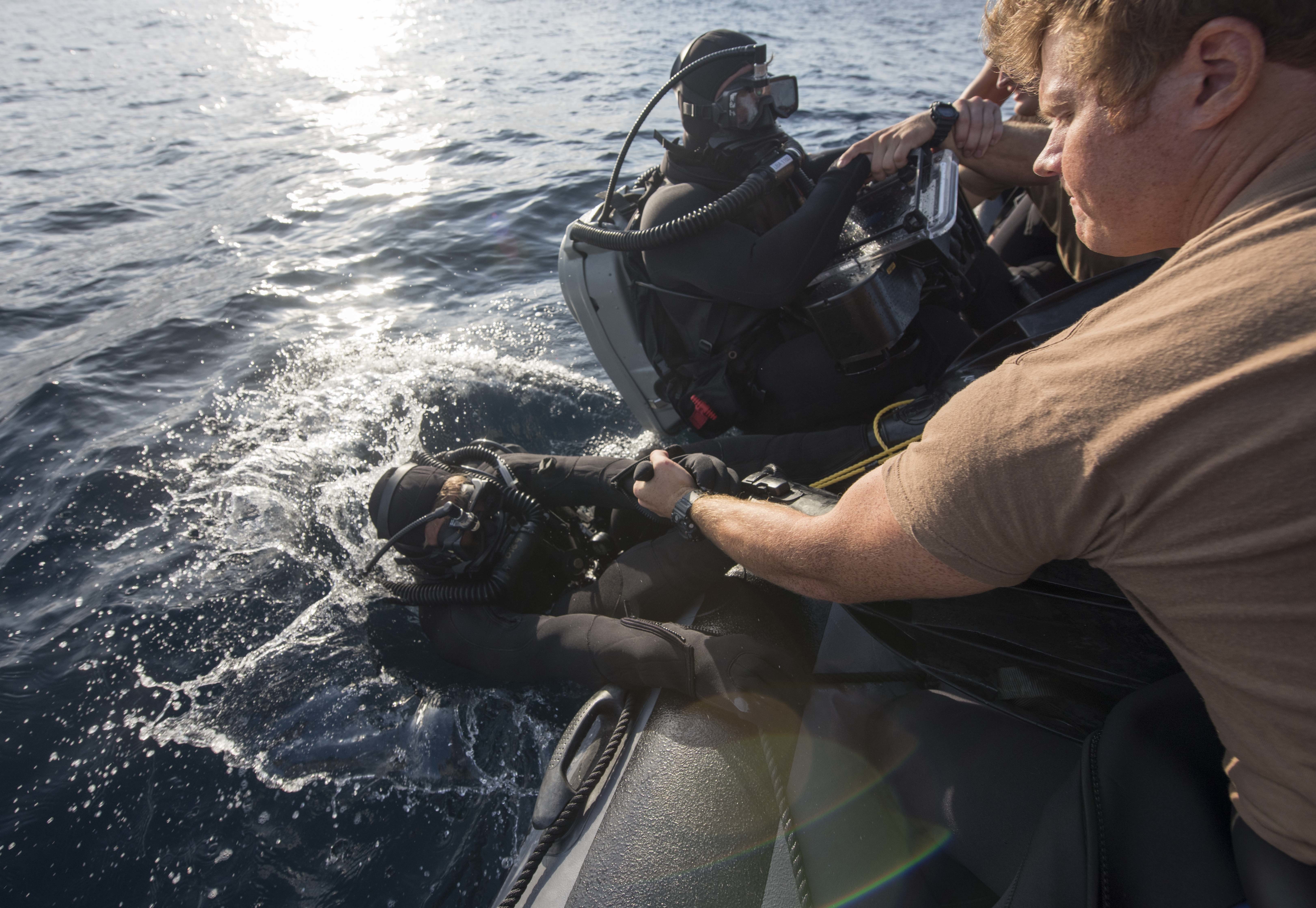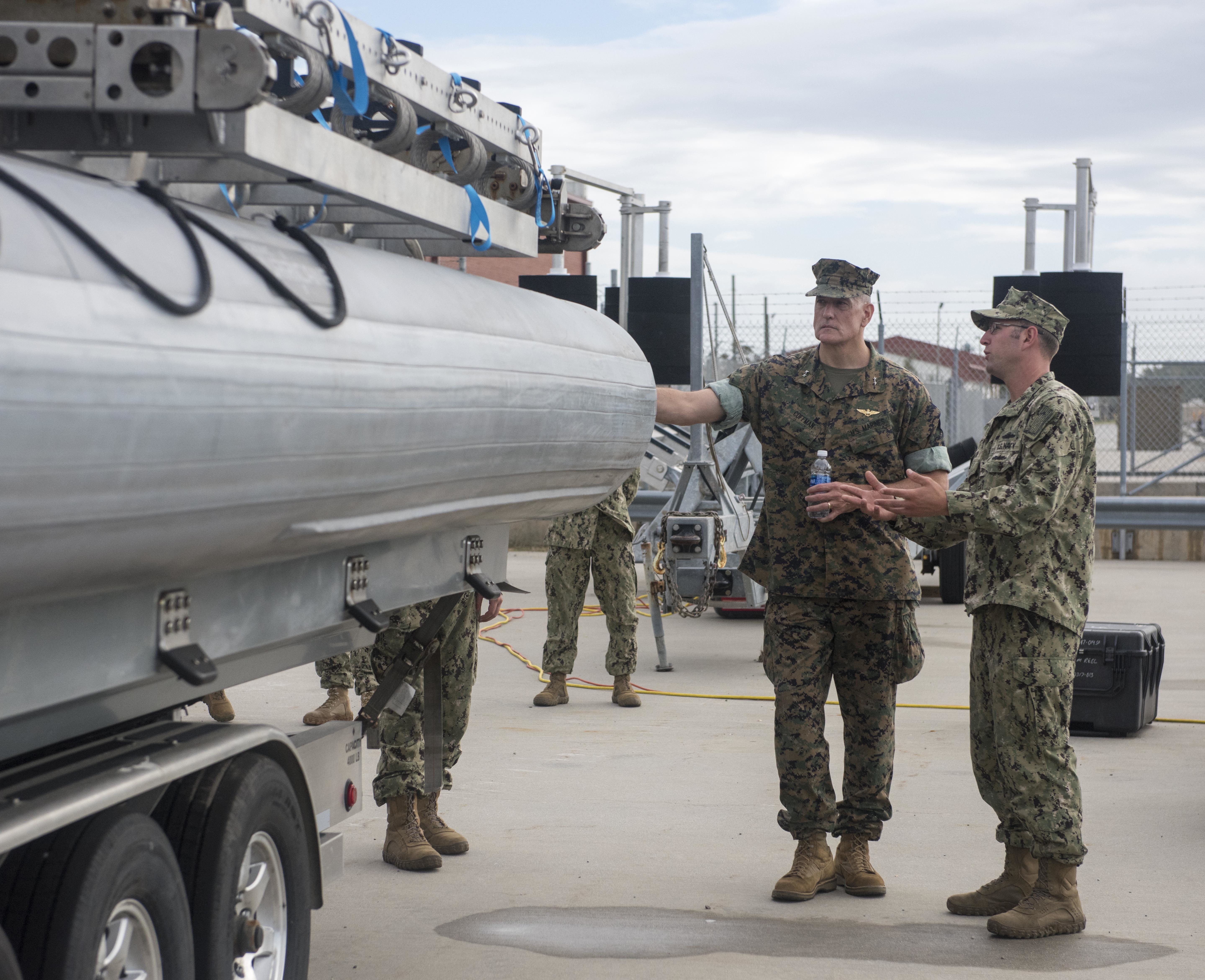
ANNAPOLIS, Md. — The Navy is trending towards a mix-and-match set of people, platforms and sensors to detect and destroy mines, a departure from the simpler legacy mine countermeasures setup with a single helicopter type and a single wooden-hull ship class, set for replacement by the new Littoral Combat Ship and its neatly defined mission package.
“The more the merrier in terms of diversity of approaches,” Marine Corps Maj. Gen. David Coffman, director of the expeditionary warfare division on the chief of naval operations staff (OPNAV N95), said Tuesday at the National Defense Industrial Association’s annual Expeditionary Warfare Conference.
Several speakers at the conference described LCSs deploying assets outside the planned MCM mission package, mission package equipment being used on cruisers and destroyers, and manned and unmanned platforms teaming up to create more range and capability than previously envisioned.
One trend is operating the land-based Expeditionary Mine Countermeasures (ExMCM) Company, which falls under the Explosive Ordnance Disposal community at Navy Expeditionary Combat Command, aboard Navy ships.
“We’ve taken our ExMCM company with their Mk 18 family of (unmanned underwater vehicle) systems, we’ve put them aboard cruisers and destroyers and had them do extensive rehearsals of the actual operations – and in some cases, in exercises and operations we’ve actually used those platforms,” Capt. Michael Egan, Commander of Task Force 52 within U.S. Naval Forces Central Command, said at the conference.
“We are already working off of amphibious ships, not only the [USS Lewis B. Puller (T-ESB-3)] and the [decommissioned Ponce (AFSB-I-15)] before that, but also the British auxiliaries. We’re not just limiting ourselves to our own ships, we’re working with our allies and our coalition partners and their ships as well.”

Egan later described the entrance of Puller into U.S. 5th Fleet this summer, saying that an ExMCM company was put on the ship early on “because it was the only platform available” to help the company test its at-sea capabilities. He said the company and its UUVs embarked, rehearsed, and then went underway to test their at-sea capability. Once the ExMCM company aboard the Expeditionary Sea Base (ESB) proved successful, “then it was just like the sky was the limit” in terms of experimenting with mine countermeasures capabilities in 5th Fleet.
The captain noted that the British Navy operating in 5th Fleet was eager to support MCM operations off a non-traditional platform.
The ExMCM community recently conducted tests with USS Independence (LCS-2) to test their ability to deploy personnel and UUVs off the Austal-built LCS, after doing similar tests on the Lockheed Martin-variant USS Freedom (LCS-1) last summer.
At the same time the Navy is putting the shore-based ExMCM companies on LCSs, some leaders are considering taking LCS MCM mission package unmanned underwater and surface vehicles and putting them on other surface ships or even ashore.
“I can’t imagine a scenario in which we would actually have enough LCSs to mass that capability as quickly as we need it” if an adversary actually deployed mines in a busy shipping area, Capt. Hans Lynch, head of the mine warfare branch within OPNAV N95, said at the conference.
“So I think shore-basing makes a lot of sense. ESB makes a lot of sense. EPF (expeditionary fast transport, formerly the Joint High Speed Vessel) makes a lot of sense. Coalition platforms. And really I think there are opportunities for even DDG-1000s, they have enough room that we can put a USV or UUVs onboard. Aircraft carriers even or some of our big-deck amphibs could support some of our mission platforms that we have.”
His boss, Coffman, said that diversifying which ships can conduct mine countermeasures and other missions has the benefit of keeping an adversary guessing.
“When [an amphibious ship] comes by your shore, you don’t know what’s on it – it could be mine countermeasures, it could be irregular warfare, it could be SEALs, it could be [signals intelligence] or [electromagnetic warfare], it could be traditional amphibious conventional operations,” he said, highlighting just one benefit of “divorcing the platforms and the movable modules” that bring particular warfare capabilities.

In addition to mixing and matching who will deploy which gear from where, the Navy is also considering teaming up a manned helicopter from the LCS mission package with unmanned mine hunters to create greater range than the mission package as planned could.
Capt. Mark Leavitt, commander of Helicopter Sea Combat Wing Atlantic, said the MH-60S is meant to deploy the Airborne Laser Mine Detection System (ALMDS) and the Airborne Mine Neutralization System (AMNS). However, he said, those helos may need to contribute to the fight in a different way: carrying unmanned systems farther from the LCS and providing force protection for the entire MCM force.
“I’ve heard the concerns of fleet commanders it’s about speed, it’s about solving the time equation, it’s about delivering some certainty with the clearance of the water space.”
Though the LCS’s unmanned surface and underwater vehicles are maturing in development and may be able to provide the certainty element eventually, they won’t have the range from the ship and therefore the speed to clear an entire area on their own.
“You’re not going to get speed from constraining mine countermeasures to an 11-mile bubble around the LCS. When we purchase unmanned surface vessels that have to remain within a range of the LCS, you’re not going to get speed, you’re not going to get range,” he said. Instead, the captain suggested, “you’ll get that by …. sling[ing] two or three Mk 18s, you sling a Knifefish (UUV), and you go 80 nautical miles away from the LCS and you put that system in the water from an aircraft (MH-60S) and you pick it back up from an aircraft.”
Leavitt suggested the MH-60S could carry a metal grate underneath to hold the unmanned vehicles, and a diver could assist in launching and recovering the vehicles.
This setup “removes the mine countermeasures systems from the 60S” but instead “allows me to carry lethality on the 60S, to put some of our fixed forward-firing weapon systems onto the Sierra so that I can defend the mine countermeasures task force. I can defend with a 20mm cannon, with Hellfire, with unguided rockets and the Advanced Precision Kill Weapon System. I can now deliver an entire package with an LCS – I can send an LCS out that has not only some MCM capabilities, and the Mk 18 capability delivered at range from a 60S, and surface search and shallow water search at range from an MQ-8 (Fire Scout), I can load up that 60S with a weapon system to defend not only the LCS but everything around it as well.”





